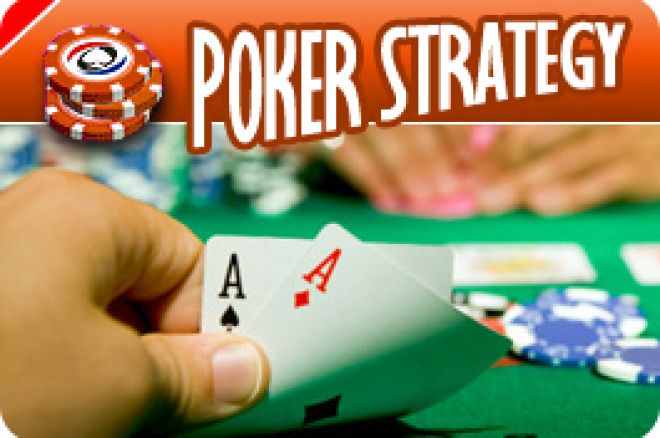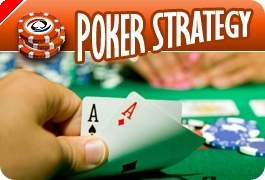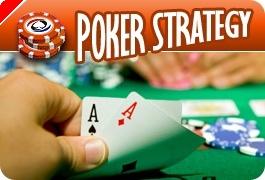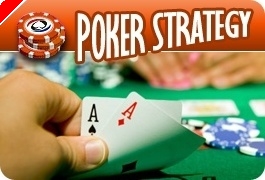H.O.R.S.E. Poker Strategy: In the Mix -- Starting Out in Badugi and Triple Draw

Last week we took a quick look at one of the earliest decisions a player has to make in a game that everyone loves to hate �� razz. This week we're continuing the lowball theme by looking at two other lowball games that have started to explode in popularity in recent years and may one day supplant razz as the lowball mixed game of choice: deuce-to-seven triple draw and badugi. These two games share certain characteristics but are dissimilar enough that sometimes both are included in the same mixed-game rotation.
In badugi and triple draw, as in razz, the object is to make the worst poker hand possible. That's pretty much where the similarities to razz end. Razz is played as a stud variant; triple draw and badugi are draw games, played with a maximum of six players and blind bets (rather than the antes and bring-in which are hallmarks of all stud variants). Players start with five and four cards in triple draw and badugi, respectively, and are allowed to discard and draw three times. The natural result of a game with three draws possible is that mediocre hands don't have much showdown value. In both games, players generally need to draw into a very low hand to have much hope of winning the pot at showdown.
An additional wrinkle presented by badugi is that the best hands are made with four non-paired cards that are all different suits. In badugi, any four-card hand beats any three-card hand, and any three-card hand beats any two-card hand. For example, 4?8?10?Q? is a four-card hand and therefore a better hand than 2?3?6?7?. In turn, the latter hand (a three-card hand) is a better hand than 2?3?10?10?, which is a higher three-card hand. When evaluating the strength of a badugi hand, consider that a card which repeats a rank or a suit of another card in the hand as counted as if it were removed from the hand. The nuts in badugi is A?2?3?4?.
In triple draw, unlike in razz and badugi, straights and flushes count, and an ace is always high. Thus the best possible hand (called a "Number One") is 2?3?4?5?7?. Note that 2?3? 4?5?7? is not the nuts; it is a flush. A hand of 2-3-4-6-7 is a Number Two; each of the other seven-high hands are usually just referred to as "a seven", and other hands are called the same way they are in razz, using the highest two cards. For example, a hand of 3?4?5?6?8? is an "eight-six" or "eighty-six".
One of the dangers presented by triple draw and badugi is the belief that, with three draws to come, it is an acceptable strategy to play mediocre or even poor hands before the first draw under the belief that if the player's hand does not significantly improve after the first draw, it can easily be folded. This is a huge leak. The problem with this strategy is that often a player's hand will improve just enough that the same mindset can be used to justify drawing a second time, and then a third time. Meanwhile, that same player's opponents may have started with an excellent three-card hand (in badugi) or four to a seven or an eight (in triple draw) and is taking three shots to draw at one card for a monster hand.
Another important point to consider is that, as triple draw and badugi are both lowball games, the best starting hands invariably contain small cards. For a beginner, a wise rule of thumb in triple draw is not to play any starting hand that doesn't have a deuce or a trey. Deuces are especially critical cards in triple draw, since it is impossible to make a seven without one. If the lowest card in a player's hand is a trey, the best possible hand is 3-4-5-6-8. That's not to say that a player can't draw into a deuce, but it's not advisable to draw at only four deuces in the remaining forty-seven unknown cards of a deck. The hold'em equivalent is calling a bet on the flop holding nothing but an inside straight draw. There may be times when it is advisable to do so, but those times are few and far between.
The badugi starting hand requirements are not so draconian. Because of the requirement to draw into a four-card hand as well as a low-ranked hand, it's not an absolute necessity to start with an ace or a deuce (but it certainly helps!). At a full table, a four-card hand is generally going to win the pot, but that four card hand might be ten-high. So when considering whether to play or fold before the first draw, a player needs at least a two-card hand ranked five or lower or a three-card hand ranked seven or lower to consider proceeding.
Bluffing is obviously quite possible in triple draw and badugi. It's a risky strategy to stand pat against one or more opponents who get three draws to try to improve. A favored bluffing opportunity in triple draw is when one player is dealt three deuces. With only one remaining deuce in the deck, it's difficult to justify drawing for almost every other player at the table (unless one of the players holds that fourth deuce). Often players will draw one time, hoping to draw into a deuce, then may fold after the first or second draw when they see an opponent confidently standing pat on all streets.
This article has just skimmed the surface of two games which are rapidly gaining in popularity. Later streets in triple draw and badugi both present their own set of challenges, unique from any flop or stud variant of poker (most notably, the decision whether to break a made hand or stand pat). But all of those decision, like every decision in poker, flow from the first decision �� whether to play or fold.








